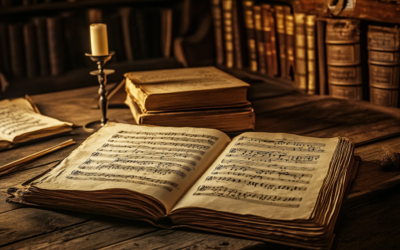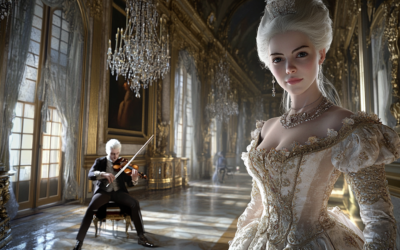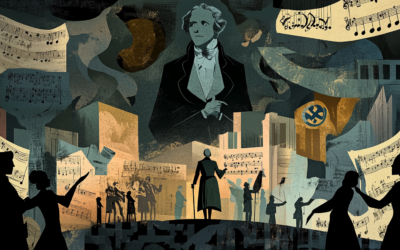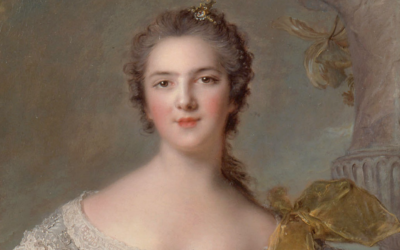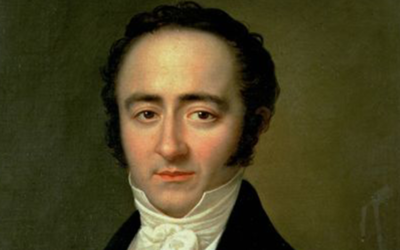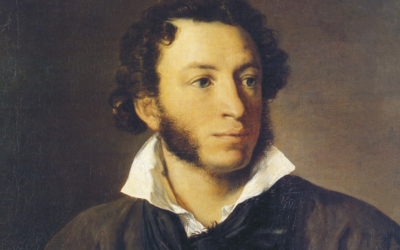Wolfgang Amadé Mozart
The Deceptive Nature of Mozart’s Catalogue
The Thematic Catalogue traditionally credited to Mozart is fraught with inaccuracies, suggesting that many of his famous works might not be his at all. This prompts a necessary reevaluation of Mozart’s legacy and the authenticity of his compositions.
“If Mozart had truly authored the Catalogue, he would not have mistakenly attributed the Arietta K. 541 to a bass when it was clearly intended for a tenor-baritone, casting further doubt on the document’s authenticity.”
Mozart: The Construction of a Genius
The Questionable Authenticity of K. 456
The legitimacy of Mozart’s Thematic Catalogue has long been debated, particularly regarding the inclusion of the Concerto K. 456 for Harpsichord and Orchestra, supposedly composed for the blind harpsichordist Teresa Paradis. The Catalogue indicates that the piece was completed on 30 September, just two days before Paradis’s final performance in Paris on 2 October. This timeline raises serious doubts. It seems highly unlikely that Mozart could have composed the Concerto, prepared all the necessary parts, and sent them to Paris in such a short span. The inclusion of this Concerto in the Catalogue without addressing these logistical challenges suggests a likely error or falsification in the dating.
Inconsistencies Surrounding K. 541
Further inconsistencies arise with the Arietta for Bass, K. 541, titled ‘Un bacio di mano’. The Catalogue lists this work as composed in May, yet it was later included in a Viennese revival of Pasquale Anfossi’s opera that same year. The Catalogue incorrectly attributes the performance to the famous bass Albertarelli, while in reality, it was sung by the tenor-baritone Del Sole. Such a mistake would be improbable if Mozart himself had recorded the information, casting further doubt on the Catalogue’s authenticity.
The Mystery of the Jupiter Symphony (K. 551)
The doubts surrounding Mozart’s Catalogue also extend to the famous Jupiter Symphony (K. 551). Some scholars point to similarities between this Symphony and the Arietta K. 541 to support Mozart’s authorship. However, if K. 541 was wrongly attributed to Mozart, the legitimacy of the Jupiter Symphony’s attribution is also questionable. Moreover, the original manuscript of the Symphony lacks Mozart’s signature or date, leading to speculation that the Catalogue was compiled posthumously to attribute this and other works to Mozart without solid evidence.
Discrepancies in Other Works
Questions also surround the authenticity of the Trio for Harpsichord, Violin, and Cello, K. 564, and the Masonic music, K. 477. Both works are listed in Mozart’s Catalogue, but with suspicious details that suggest someone else may have composed or copied them. The strikingly similar handwriting between the Catalogue and the manuscripts suggests potential forgery. Albert Osborn, a scholar on falsifications, argued that anyone who reproduces handwriting exactly is likely a forger, as it is impossible for a person to replicate the same phrase, musical passage, or signature identically multiple times.
Conclusion: A Catalogue of Errors
Often regarded as a definitive record of Mozart’s works, the Thematic Catalogue is fraught with inaccuracies, questionable attributions, and possible forgeries. These issues indicate that much of what has been traditionally accepted about Mozart’s later works, including some of his most celebrated compositions, may not be as it seems.
The discrepancies found in the Catalogue suggest it was likely created after Mozart’s death, potentially by those with an interest in enhancing his legacy. Given all these contradictions, the authenticity of many works attributed to Mozart must be reconsidered.
Journal of Forensic Document Examination
Mozart’s Catalogue Exposed
You May Also Like
The Kolb Concerto: A Mozartian Mirage?
The Kolb Concerto’s dubious origin and poor musical quality expose yet another myth in the Mozartian canon. If this is the work of a genius, then perhaps we’ve been fooled for centuries.
The Adélaïde Deception: Mozart’s “Lost” Violin Concerto and the Art of Musical Forgery
In the early 20th century, the “discovery” of Mozart’s sixth violin concerto in Paris created a sensation. Dubbed the Adélaïde Concerto and supposedly written for Madame Adélaïde of France, it was hailed as a testament to Mozart’s genius. However, as the story unfolds, it becomes clear that this masterpiece was not the work of the child prodigy but rather a carefully orchestrated hoax by Marius Casadesus. Despite its unmasking as a forgery, the concerto continues to captivate audiences, raising questions about authenticity and the music industry’s willingness to deceive for profit.
Mozart and the Nationalist Illusion: The 1931 Festival and Its Legacy
The Salzburg Festival, far from being a mere celebration of Mozart’s genius, was born out of nationalist ambitions during a turbulent period in Austro-German history. Conceived by figures like Max Reinhardt, Heinrich Damisch, and Friedrich Gehmacher, the festival was deeply rooted in ultranationalistic ideals, transforming Mozart’s legacy into a tool for cultural dominance. The truth behind its founding has long been obscured, but the primary sources tell a different, darker story.
K.6 and K.7 Sonatas: A Fabricated Genius?
The earliest sonatas of Wolfgang Amadeus Mozart, K.6 and K.7, are traditionally seen as proof of his precocious genius. But as we explore the murky origins of these works, we find that they may be more a product of Leopold Mozart’s ambition than Wolfgang’s musical talent. The truth, as always, lies somewhere between the notes.
Georg Nissen and the Missing Notebooks – Part II
This second part delves deeper into Georg Nissen’s scheme to expose the truth about Mozart’s death, and the roles of Constanze Mozart and her sons in keeping it buried. As new details emerge, the mystery surrounding the famous composer’s final days grows even darker, with powerful forces potentially at play.
Mozart and Salieri
Pushkin does not see Salieri as a mere mediocre. In fact, Salieri embodies the struggle of the artist, much like Michelangelo, who reaches greatness through relentless effort. Pushkin himself identifies with both Mozart and Salieri, but he emphasises that true art demands work, discipline, and sacrifice. In poisoning the Mozartian element within himself, Salieri performs a service to art, freeing it from the frivolity of effortless genius. ‘Can genius and malice coexist?’ Pushkin’s answer is complex, but in the end, Salieri’s act seems to affirm that true creation lies in the hands of those who strive.


